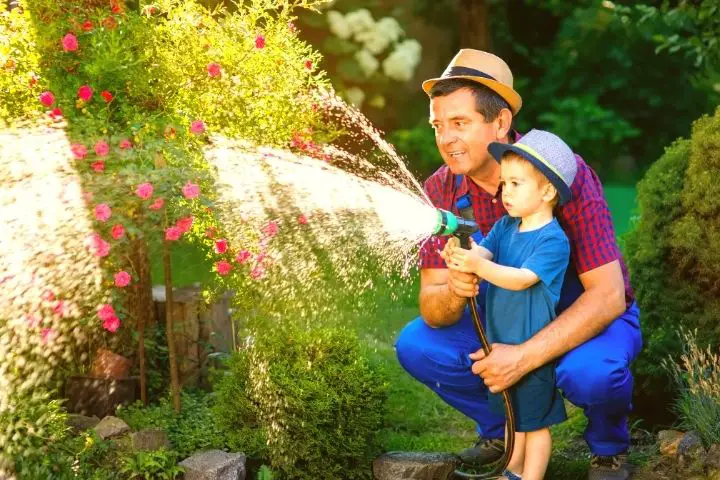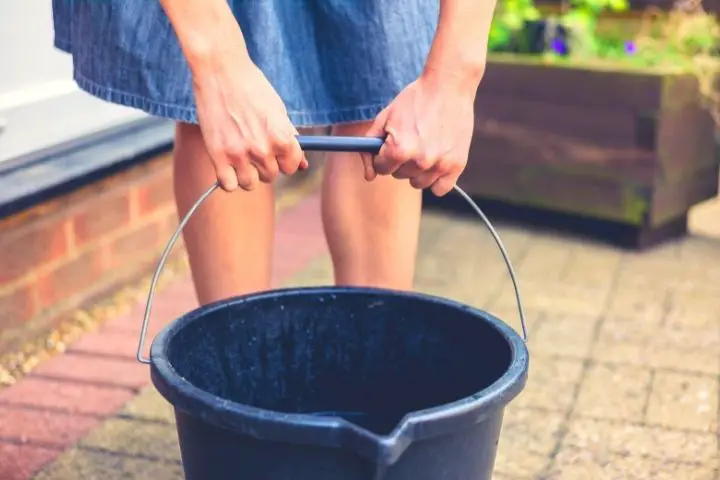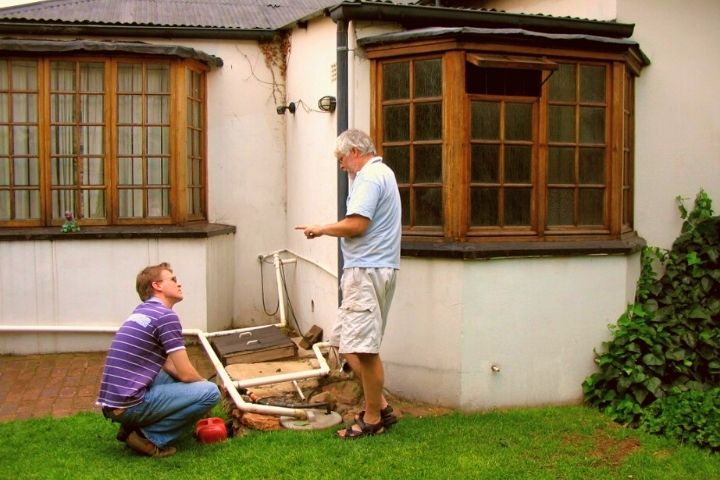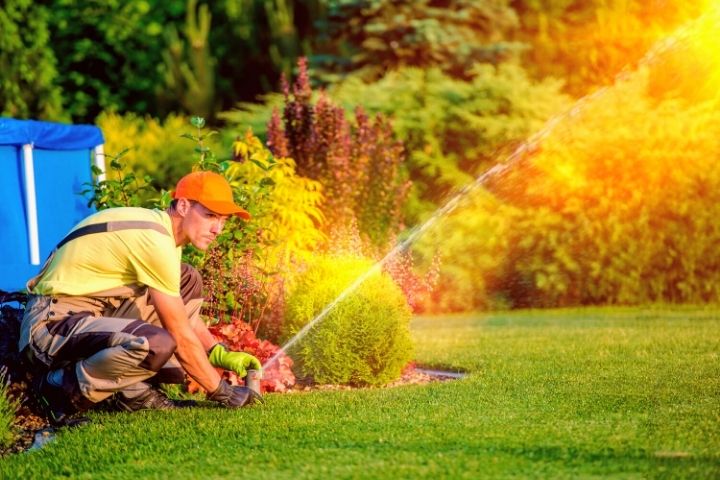Is It Safe to Use Grey Water for Garden? Things You Should Know!
If you live in an arid place or simply just want to make a more positive impact on the environment, then using grey water in your garden is a good place to start.
But, “Is it safe?!” you ask…
Well, using grey water to sustain your garden is safe in most cases as it contains some nutrients and organic compounds which are very essential for a plant’s growth and development.
You just have to know how to effectively harvest and distribute it in your garden to get the best results for your plants.
So, how do you go about this?
Let’s find out below!
Is Grey Water Safe for Your Garden?
Grey water does contain several essential compounds needed for a plant to thrive as I had put across earlier. If you were to channel all these rich resources and maintain a safe grey water recycling system, then you’d have a boom of blooms in your garden.
It comes from places like your kitchen, shower, and other domestic cleaning activities. Grey water does not in any way mix with wastewater coming from the toilet that contains dangerous pathogens like the E.coli bacteria that’s known to cause terrible gastrointestinal infections.
It gives you a fantastic alternative for watering your precious garden or lawn, more so, if you live in dry regions where you can’t depend on rainfall.

And even better, it helps you save a lot on your freshwater reserve as it’ll now be only used for the crucial things in the house e.g., cooking, drinking, showering, and cleaning (dishes & laundry).
Perhaps one of the best things again about using grey water in your garden is that you’ll get to save on the cost of fertilizer needed to keep your garden plants healthy. (Hobby botanists will understand what I am talking about here.
On the other hand …
Using grey water gives you an opportunity to reduce your carbon footprint. It helps cut out on all the energy that would have been inevitably used if you had decided to treat the water through the city’s sewage services.
How?
If you factor in the cost of fuel, the amount of emission that the vehicles and machinery would produce, and the gazillion chemical treatments involved – you will get the picture!
How To Bring Grey Water to Your Garden
Well, having given you all that knowledge, how then do you go about recycling grey water and putting it to use in your garden most effectively?
I decided to highlight 2 easy ways that’ll keep things simple for you:
1. You Can Use Buckets

Yes! Using buckets to harvest all the grey water coming from your laundry, dishes, and shower is easy to do at home.
It’s also the simplest and most cost-efficient grey water collection method you can think of!
To hack it, you would first have to get a bucket that’s solely dedicated to this purpose (it can’t be reused anywhere else). You also have to make sure that the bucket is big enough to handle all the grey water output coming from your house.
The size of the bucket will depend on the amount of grey water your household releases and where you want to collect this water from.
Another great factor determining the capacity of the collecting bucket to be used is the size of the garden in question. The bigger it is, the larger the tank has to be and vice versa.
Once you have that figured out…
You can go ahead and connect your washing machine outlet to the bucket now acting as storage. You can also have a plumber install a special conduit that channels the run-off water from your kitchen sink and shower drain into the bucket.
Once you have successfully collected the grey water, you can keep it in a separate tank that has a network of irrigation piping connected, leading directly to your garden.
Hint: To get the best sample, you should make an effort to only collect grey water from the rinse cycle in your washing machine. It’s also best that you leave the sink filter on to prevent solid food waste from getting into the storage as it’ll make the water ‘go bad’ quicker.
2. You Can Install a Grey Water System

This is a more modern method that uses mechanical technology to trap, recycle, and reuse grey water in your garden. It also works well if your house produces a lot of grey water that can’t just be recycled using buckets.
In place of them (buckets), this method uses gravity and a special valve to direct all of the grey water from the washing machine, kitchen, and shower to designated storage.
From the storage, the collected grey water is then passed through either a sand filter or a simple drainfield where all the toxins and impurities in the water are removed.
If you have a bigger house – or a larger grey water output volume – then you should also consider using a septic tank if you already have one installed.
After the grey water has successfully gone through the treatment process, it’s then distributed through an irrigation piping scheme throughout your garden.
This method is more effective in removing toxic waste from the grey water than using buckets. It also gives your plants a much safer resource with fewer chances of getting poisoned.
How To Regulate Grey Water in Your Garden
As cool as grey water has continuously proven to be, how do you ensure that it remains safe for you and your garden? Also, how do you manage its distribution so that every plant gets enough for its growth?
You can achieve all these by observing the following:

- Constantly irrigate your garden if you live in an arid area or around drier climates. If you regularly receive rainfall, you should cut back on irrigation to prevent waterlogging the garden’s soil.
- If you have a small garden, seek high water-tolerance plants if your house produces lots of grey water. For a big garden suffering from a low supply of grey water, you should focus most of the irrigation on plants that need water the most and share the rest with the more drought-resistant variety.
- Avoid storing the grey water for 24+ hours. Past that, the microbes and bacteria found in the water would’ve broken down the organic waste, causing it to smell like sewage.
- Do not use grey water on consumable vegetables. There are still traces of toxins like phosphorous that can be quite poisonous if ingested by a human being.
- Create an even irrigation network in your garden. Allowing the treated grey water to pool in one place can cause the soil in that particular area to become saturated with salts, making it unsuitable for plant growth.
Frequently Asked Questions
1. How can I use grey water in my garden?
The best way to use grey water is by using buried pipes to deliver it close to the plants’ roots.
Using drip irrigation ensures that the water is directed where it’s actually needed and prevents run-off wastage.
The other benefit of using this method is that since the water is delivered through a buried pipe system, there is less chance of any odor coming to destroy the peace in the air on top.
2. What soaps are safe to use in grey water collection for garden use?
You should use soaps with low phosphorous and salt levels in grey water intended for garden use.
Using soaps or detergents that have a pH higher than 8.5 will make the soil too alkaline. As a result, your plants will die from the extremely toxic alkalinity they’ll be subjected to.
If you plan to use grey water in your garden, you should only go for soaps that have “low salts” labeled on their packages.






